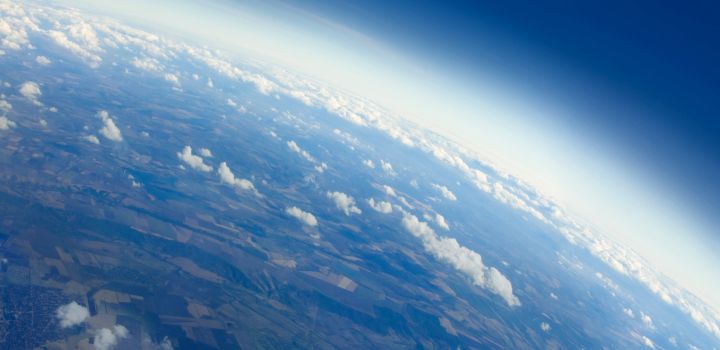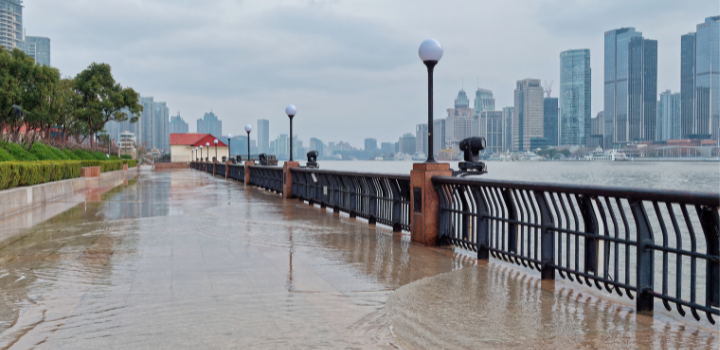Increase in wildfires in the Brazilian Amazon masks progress on forest protection
By: Communications

New research shows that Brazil achieved “positive environmental strides” in the Amazon in 2023, with the number of deforestation fires at a five-year low.
Data from Brazil’s national fire monitoring system reveals that last year saw a 22% reduction in deforestation rates and a 16% decline in total fire counts compared with 2022, attributed to renewed environmental policy implementation under a new government led by president Luiz Inacio Lula da Silva.
However, despite progress, deforestation remains above the target, and forest wildfires in old-growth Amazonian forests surged by 152% in 2023 versus 2022, threatening biodiversity and carbon stocks, as well as posing challenges for traditional farmers and impacting urban areas' air quality.
The research was led by Dr Guilherme Mataveli, from the Brazilian National Institute for Space Research (INPE) and currently a Visiting Fellow at the Tyndall Centre for Climate Change Research at UEA. It has highlighted the urgent need to address the causes of forest wildfires.
“The decline in deforestation, likely a result of a stronger environmental policy under the new Brazilian administration, has led to an impressive 70% decrease in deforestation fires in 2023,” says Dr Mataveli.
"Avoiding destructive fires is central to protecting Brazil's environmental assets, sustainable sources of income, and the cultural heritage of the Amazon and its peoples."
Wildfires present a significant threat to the Amazon forest, a global hotspot for biodiversity and carbon storage and an ecosystem that sustains the life and livelihoods of many forest-dependent communities.
The increase in forest wildfires is a response to the 2023–2024 drought, which is expected to last until the end of April. Drought events, increasingly frequent in the Amazon, make forests drier and more flammable.
Moreover, increased forest wildfires in the Brazilian Amazon have a global impact because they release carbon dioxide and other greenhouse gases and aerosols associated with climate change into the atmosphere, and burned forests take decades to re-capture the carbon lost.
More locally, the city of Manaus, home to over two million people, experienced the second-worst air quality in the world in October of 2023.
Co-author Dr Matthew Jones said: “This study reveals both good news and bad news. The good news is that a change in Brazilian government in 2022 had an immediate effect on the number of deforestation fires that burned in the Amazon. The bad news is that a historic drought in 2023 led to a peak in wildfire activity, offsetting some of the progress on reducing deforestation fires.
“We should be encouraged that the change in political stance has already triggered positive outcomes for forests in the Amazon, but we should also be wary of the rising threat of drought.”
Dr Rachel Carmenta, who also co-authored the study, added: “It is not only the health of local and regional populations at stake, but also the food security and wellbeing of many rural Amazonians that rely on the forest landscapes for food, medicine and their territorial rights - all of which are depleted when forests are degraded by drought and fire.”
The authors say preventing wildfires includes short-term, fast-response well-equipped fire brigades, improved weather forecast systems and fire behaviour predictions.
Over the longer-term, fire-free cattle ranching and land management, as well as accountability to deter arson for land speculation and adaptations of fire use and its management on smallholdings are necessary to respond to increasing wildfires in the Brazilian Amazon.
‘Deforestation falls but rise of wildfires continues degrading Brazilian Amazon forests’ is published in the Journal of Global Change Biology.
Related Articles

Overlooked hydrogen emissions are heating Earth and supercharging methane
Rising global emissions of hydrogen over the past three decades have amplified the impact of the greenhouse gas methane and intensified climate change - according to an international team including researchers at the University of East Anglia (UEA).
Read more
Investing in planetary health would deliver fewer deaths and less poverty
The most comprehensive assessment of the global environment ever undertaken has found that investing in a stable climate, healthy nature, land and a pollution-free planet can avoid millions of deaths and lift hundreds of millions of people out of poverty.
Read more
Flood risks in delta cities are increasing, study finds
New research shows how the combination of extreme climate events, sea-level rise and land subsidence could create larger and deeper floods in coastal cities in future.
Read more